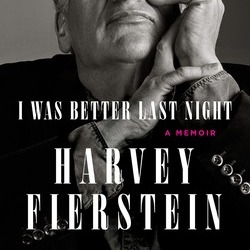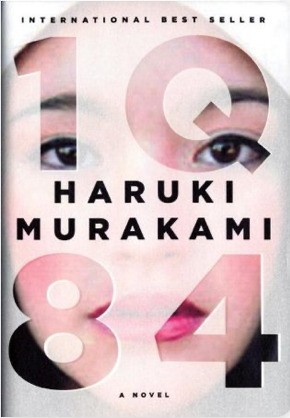#Knopf
Text
Leila Mottley was regularly writing and performing poetry even before she published her novel Nightcrawling at only nineteen, in 2022; today we get an advance peek into her forthcoming first collection, woke up no light. Divided into hoods—sections on Girlhood, Neighborhood, Falsehood, and Womanhood—the poems instruct us, as here, in the art of noticing, speaking boldly, and feeling deeply.
what to do when you see a Black woman cry
stop. hum a little / just for some sound / just for a way to fill us up
it is streetlamp time / all moon-cheeked black girls are
mourning / a wailing kind of undoing
don’t mistake this as a tragedy / it is sacred
don’t mistake this as a glorious pain / we hurt.
don’t tell me it will be alright.
make me a gourmet meal and don’t expect me
to do the dishes after
don’t try to hug me without asking first
if i slept last night / if i need some
jasmine tea / and a bath in a tub
deep enough to fit my grief
and if i say i want a hug
don’t touch my hair while you do it / don’t twist
my braids around your fingers
or tell me my fro is matted in the back
from banging my head
on the wall of so many askings
you think we are sobbing for the men,
but we are praying for the men / their favorite
sweat-soaked t-shirts
we are screeching for our thighs
for our throats / and our teeth-chipping / for the terror
and the ceremony / and the unending always
of this sky
so if i let you see a tear drip / if i let you see my teeth chatter
know you are witnessing a miracle
know you are not entitled to my face crack / head shake / sob
but i do not cry in front of just anyone
so stop. hum a little / just for some sound / just to fill me up
More on this book and author:
Learn more about woke up no light by Leila Mottley.
Browse other books by Leila Mottley and follow her on Instagram @leilamottley.
Click here to read Leila Mottley's curated list of recommended books about the San Francisco Bay Area.
Leila Mottley will be in Brooklyn for a Poetry Night reading and conversation with Tatiana Johnson-Boria at Books Are Magic (Montague Street location) on April 24, 2024 at 7:00 PM. The event will also be livestreamed for free on Youtube.
Visit our Tumblr to peruse poems, audio recordings, and broadsides in the Knopf poem-a-day series.
To share the poem-a-day experience with friends, pass along this link.
#MottleyAudio#poetry#knopf#poem-a-day#knopf poetry#national poetry month#poetry month#knopfpoetry#poem#Leila Mottley#woke up no light#what to do when you see a Black woman cry
143 notes
·
View notes
Text

Charles Addams: The World of Charles Addams (1933-1990/1991)
6 notes
·
View notes
Photo


Sorry, Mommy, but according to the Beary Best Friends Property Laws, this is MY beanie now.
- Knopf
11 notes
·
View notes
Photo

So I had the pleasure of reading Bret Easton Ellis’ The Shards. There you go.
4 notes
·
View notes
Text
I Was Better Last Night: A Memoir by Harvey Fierstein
I Was Better Last Night: A Memoir by Harvey Fierstein
Tony Award–winning actor and playwright, revealing never-before-told stories of his personal struggles and conflict, of sex and romance, and of his fabled career
Harvey Fierstein’s legendary career has transported him from community theater in Brooklyn, to the lights of Broadway, to the absurd excesses of Hollywood and back. He’s received accolades and awards for acting in and/or writing an…

View On WordPress
2 notes
·
View notes
Text
Haruki Murakami’s 1Q84 is a literary masterpiece stretching the bounds of the imagination with a touch as light as a feather.
1Q84 is a masterpiece in any language.
Part of his light touch comes from his unique method of composition. Murakami writes the first draft of his novels in English (his second language) then translates the second draft into Japanese. By doing this, he achieves a rhythm of concise unembellished sentences and a purity of expression and clean turn-of-phrase with a trim vocabulary.
The resulting story in 1Q84 is one of simple,…

View On WordPress
0 notes
Text
Feuilleton

Feuilleton · Curt Emmrich · Hosenknopf · Satire
Die Kunst des Feuilletons besteht nicht darin, über ein Thema zu schreiben, sondern über kein Thema zu schreiben. Statt des Themas gibt es einen Anlass. Anlass kann jeder Hosenknopf sein.
Wenn man den Knopf als Exempel nimmt, will man damit sagen, dass der Knopf etwas von Natur Unbedeutendes sei. Es kommt also darauf an, dem Unbedeutenden Bedeutung zu geben. Damit nun niemand sage, wir drückten uns vor unseren eigenen Maximen, wollen wir bei diesem Anlass bleiben. Schreiben wir über den Knopf.
Sowie wir sein bescheidenes Rund ins Auge fassen, entdecken wir, welch bedeutsame Rolle dieser unbeachtete Gegenstand in unserem Leben spielt.
Jeden Morgen durchschneidet prächtig und großartig die Scheibe der Sonne den Horizont. Mit genau derselben Regelmäßigkeit, mit welcher allmorgendlich die erhabene Scheibe der Sonne den Horizont durchschneidet, mit genau derselben Regelmäßigkeit durchschneidet allmorgendlich die bescheidene Scheibe des Hosenknopfs das Knopfloch.
Zwischen der Sonne und dem Himmel besteht somit das gleiche Verhältnis der Angemessenheit wie zwischen dem Knopf und seinem Loch. Ja, wenn die Sonne, von Wolken verhangen, nicht in unseren Morgen tritt, so ändert das wenig an unseres Tages Lauf. Wenn aber der Hosenknopf sein Knopfloch verfehlt, ist unsere menschliche Würde in Gefahr.
Wie blind waren wir bisher, diesen Gegenstand so gering zu achten, von dessen Wohlverhalten die Würde unserer Person abhängig ist.
Feuilleton · Curt Emmrich · Hosenknopf · Satire
Read the full article
0 notes
Text
Speck: an epic journey
Speck: An Itty-Bitty Epic, by Margaux Meganck, (March 2024, Knopf), $19.99, ISBN: 9780593301975
Ages 3-6
Go on an epic journey with a tiny speck in this gorgeously illustrated story. A little speck is born in a tide pool and is swept along “past creatures to cling to rocks, / past flickering fins and flashing scales”; separated from their group, each speck is searching for something. Some drift…

View On WordPress
0 notes
Text
An extraordinary interrogation: Ordinary Notes by Christina Sharpe
An extraordinary interrogation: Ordinary Notes by Christina Sharpe
I want to tell how sorrow makes a shape that is familiar. And how that familiar thing can be difficult to both name and to narrate. (Note 83)
For the past week or so I have been sitting in the presence of this singular text. I have been ill, so it has had a little extra time to spin through my fevered brain. And yet, it is not easy to articulate my response.
Ordinary Notes is a text one must come…

View On WordPress
#art#Black history#Black life#book review#books#Canada#Christina Sharpe#Farrar Straus & Giroux#Knopf#literature#nonfiction#Ordinary Notes#US
0 notes
Text
A poem of girlhood and after by Indigenous New Zealander Tayi Tibble, whose second collection, Rangikura, comes out in America today. In the dictionary of Māori language, hōmiromiro is defined as “a white-breasted North Island tomtit…a little black-and-white bird with a large head and short tail.” It is often used to refer to someone with a tomtit’s keen vision—that is, a sharp eye for detail.
Hōmiromiro
I used to dream
about a two-headed goldfish.
I took it for an omen.
I smashed a milk bottle open
on a boiling road and watched
a three-legged dog lick it up
and in the process I became
not myself but a single shard
of glass and thought finally
I had starved myself skinny enough
to slip into the splits of the universe
but once I did I realised that the universe
was no place for a young thing to be
and there is always a lot more starving to be had.
When I was a girl I thought
I was Daisy Buchanan.
I read on the train.
I made voluminous eyes.
Once I walked in front of a bus and it exploded
into a million monarch butterflies
then I was ecstatic!
As a girl, I could only fathom
time as rose petals falling
down my oesophagus.
It tickled and it frightened me.
I ran around choking for attention.
I had projections of myself
at 100
my neck weathered and adorned
like the boards of a home
being eaten by the earth.
When I was a girl I would lie
on the side of that road
in the last lick of sun and wait
for the rabbits to come saluting
the sky of orange dust
and then I would shoot them into outer space.
For many years I watched them
bouncing on the moon.
But then I stopped caring and so
I stopped looking.
More on this book and author:
Learn more about Rangikura by Tayi Tibble.
Browse other books by Tayi Tibble and follow her on Instagram @paniaofthekeef.
Hear Tayi Tibble and Harryette Mullen read from their new poetry collections at Beyond Baroque in Los Angeles, CA on April 10 at 8:00 PM. Tayi Tibble will be joined by Sasha LaPointe in Washington for a series of readings and conversations at Elliot Bay Book Company in Seattle on April 13 at 7:00 PM, at King's Books in Tacoma on April 14 at 1:00 PM, at Bainbridge Island Museum of Art in Bainbridge on April 15 at 7:00 PM, and at Third Place Books in Seattle, Lake Forest Park, on April 16 at 7:00 PM. Tayi and Sasha will also be at Broadway Books in Portland, OR, on April 17 at 6:00 PM. Tayi will be at the LA Times Book Festival signing books at the ALTA booth (Booth 111) on April 20 at 11:00 AM.
Visit our Tumblr to peruse poems, audio recordings, and broadsides in the Knopf poem-a-day series.
To share the poem-a-day experience with friends, pass along this link.
#TibbleAudio#poetry#knopf#poem-a-day#knopf poetry#national poetry month#poetry month#knopfpoetry#poem#tayi tibble#rangikura#homirmiro
92 notes
·
View notes
Text
Love, Iranian Style
By James Wood
June 22, 2009

Sometimes, the soft literary citizens of liberal democracy long for prohibition. Coming up with anything to write about can be difficult when you are allowed to write about anything. A day in which the most arduous choice has been between “grande” and “tall” does not conduce to literary strenuousness. And what do we know about life? Our grand tour was only through the gently borderless continent of Google. Nothing constrains us. Perhaps we look enviously at those who have the misfortune to live in countries where literature is taken seriously enough to be censored, and writers venerated with imprisonment. What if writing were made a bit more exigent for us? What if we had less of everything? It might make our literary culture more “serious,” certainly more creatively ingenious. Instead of drowning in choice, we would have to be inventive around our thirst. Tyranny is the mother of metaphor, and all that.
Among other things, Shahriar Mandanipour’s novel “Censoring an Iranian Love Story” (translated by Sara Khalili; Knopf; $25) is a tough reply to such maundering. Mandanipour, a distinguished Iranian novelist and short-story writer, was prohibited from publishing his fiction in his native country between 1992 and 1997. He came to the United States in 2006, as an International Writers Project Fellow at Brown University, and stayed in America. This novel, his first major work to be translated into English, was written in Farsi but cannot be read in Iran. His book is thus acutely displaced: it had to have been written with an audience outside of Iran in mind, but in a language that this audience would mostly not understand; it depends on translation for its being, yet its being is thoroughly Iranian, lovingly and allusively so, dense with local reference. And it takes as its subject exactly these paradoxes, for it is explicitly about what can and cannot be written in contemporary Iranian fiction.
Novelists fret over how to get their characters into and out of rooms, but what if their characters weren’t allowed to be in those rooms in the first place? How might one write a love story about a young man and woman, set in a country in which the unmarried couple is not allowed to spend any significant time together? At the beginning of “Censoring an Iranian Love Story,” two Tehran natives, Dara and Sara, meet at a student demonstration outside Tehran University, and spend the next two hundred and eighty pages attempting not so much to consummate their relationship as simply to begin it. It is like something out of Laurence Sterne, and Mandanipour, who dedicates his book to the postmodern novelist Robert Coover (among others), is playfully alive to the elasticated comedy of a digressive story that expends all its energy on failing to start.
But this narrative foreplay isn’t just play, because it is forced and not free, conditioned by Iranian political reality. Dara and Sara cannot walk along a street without attracting attention from the morals patrols. If caught, they might have to pretend to be siblings. An Internet café could be just as risky. They cannot freely visit each other at home. Where to go? The author, who likes to break into his narrative with asides and gossip, tells us that he once wrote a story in which he led his amorous couple to a cemetery as their meeting place. “At the time, the anticorruption officers’ imagination did not extend to a girl and a boy taking advantage of the grave of an unsuspecting and helpless dead mother to set the stage for their sin.” Later in the novel, for much the same reason, Dara and Sara, keeping one step ahead of the imagination of the morals police, take refuge in a hospital emergency room, where people will be too busy to notice them. And, in addition to the characters’ material constraints, there are the writer’s. Literature is, of course, censored in Iran. The author jokes about how Iran is subconsciously practicing “the late Roland Barthes’s theory of the Death of the Author,” and likens this control to political torture and disappearance: “So it is that many stories . . . in maneuvering their way through the Ministry of Culture and Islamic Guidance either are wounded, lose certain limbs, or are with finality put to death.”
Mandanipour’s inventive way of depicting this censorship in his novel is to inscribe it, quite literally, in the pages of his novel. So throughout the book, whenever the story of Dara and Sara becomes unacceptably political or erotic, offending sentences are crossed out—not blotted out (as was done in Joseph Weisberg’s recent C.I.A. thriller “An Ordinary Spy”) but struck through with a horizontal line, so that the reader can examine what might constitute a literary offense in Iran. The text is veiled, but the author lifts the veil for his non-Iranian audience. A typical passage begins, “Sara is studying Iranian literature at Tehran University.” But the following sentence is crossed out: “However, in compliance with an unwritten law, teaching contemporary Iranian literature is forbidden in Iranian schools and universities.” When Sara goes into a store to buy sunglasses, the store owner, a man, watches her, and says, with a sigh, “What a shame for those beautiful eyes and that tantalizing face to be hidden behind those glasses.” The phrase “and that tantalizing face” is struck out.
It is an effective, simple idea that gets less suggestive as the novel proceeds—partly because Mandanipour does not much vary the kind of material that is redacted, and partly because the redacted material is, of course, almost perfectly legible. The text thus has it both ways, simultaneously veiling and unveiling itself for the Western reader, in a slightly too easy pact. More powerful is a figurative vandalism: it is the novel’s insistent argument that a modern Iranian love story can hardly be written at all, because it is contaminated not only by the fact of censorship but by the idea of censorship, and bound by literary conventions. The reader is made aware that behind Sara and Dara stands the famous twelfth-century Iranian poem about two lovers, “Khosrow and Shirin.” In one of his many mischievous authorial interventions, Mandanipour notes that ancient Sufi love poetry often likens the body of a woman to a cypress tree, her eyes to those of a gazelle, her breasts to pomegranates, and so on. He implies that this level of figurative ornament is a kind of self-censorship by simile. So the tale of Sara and Dara is not only scored by the censor’s markings; it is constantly lapsing into cliché and conventional euphemism, because direct erotic language is not possible. “Sara’s lips resemble plump ripe cherries with their delicate skin about to split from the heat of the sun,” the author writes, knowingly. This love story cannot be told naturally, only unnaturally, with much interruption and self-consciousness: “Exactly a year before the political demonstration I told you about, on a spring day—and in old Iranian love stories there is a beautiful spring day with the song of nightingales and other pleasant-sounding birds resonating from sentences—Sara appears at the public library.”
“Censoring an Iranian Love Story” is not simply prohibited by censorship but made by it. For Mandanipour, the censor is a kind of co-writer of the book, and he appears often in this novel, under the alias of Porfiry Petrovich (the detective who chases Dostoyevsky’s Raskolnikov). We see him squabbling with Mandanipour, chatting to another Iranian writer, plotting alternative stories for Dara and Sara, striking out offensive phrases, and finally falling in love with Sara. He is a heavy presence in the novel, and is both creator and critic; the writer is always anticipating the imagination of prohibition even as he tries to outwit it. Even more interesting, the writer, in this situation, becomes his characters; he wants what they want. Their freedom is bound up with his. This interdependency does provocative things to the relation of fiction to reality. On the one hand, fiction becomes more real—real enough to strike lines through. On the other hand, fiction becomes more fictional—multiple writers (the author and his censors) are making up a collective story as they go along, improvising, cutting, editing, bargaining with each other. One of the great successes of this book is how thoroughly it persuades the reader that a novel about censorship could not help also being a novel about fiction-making; and it thus brings a political gravity to a fictive self-consciousness sometimes abused by the more weightless postmodernism.
Since the official love story can barely get off the ground, Mandanipour supplies the unofficial version, in an essayistic running commentary that often displaces the official tale for pages on end. (The formal love story appears on the page in bold type, the authorial interpolations in roman.) This commentary, in which Mandanipour writes as himself, entertainingly informs the reader about the riskier aspects of the two protagonists, the history of censorship in Iran, the revolution of 1979, and so on. We learn that Dara, before he met Sara, was studying filmmaking at Tehran University, and was imprisoned for leftist activity. He was released, only to find that his place at the university had disappeared. He earned money by selling videos of Western auteurs (Welles, Bergman, Antonioni) but was arrested and imprisoned again, and this time was put in solitary confinement. Dara’s father suffered more acute repetitions: a Communist before 1979, he was arrested under the Shah and put in the notorious Evin prison. After the revolution, he was triumphantly released, but six years later was rearrested, once again “for the crime of being a Communist,” and sent back to the same prison. “The beggars have changed places, but the lash goes on,” as Yeats has it. Mandanipour likes these politically circular stories, painful and faintly comic in their seriality, and he is often mordant about the great revolution that turned out not to be one:
At Tehran University, students demonstrated against American imperialism, and the army attacked the university and killed three students. University students and political activists named this day University Students’ Day, and every year on the sixteenth of Āzar there were demonstrations and protests against the Shah’s regime. The students would break the windows of college buildings, and the university guards would attack them. They would beat them up and arrest some of them, and in jail they would flog them or sodomize them with Coca-Cola bottles. They would then release them so that on the next sixteenth of Āzar the students could break even more windows. However, after the revolution, the Islamic Republic’s regime executed so many students and political oppositionists every day that no one could name a particular day for a particular occasion. Therefore, all our days became the sixteenth of Āzar, meaning all our days became days on which a group of people were killed for freedom. The masterwork of the Islamic Republic was that it eradicated the importance of occasions.
The first hundred pages or so of “Censoring an Iranian Love Story” are exciting. Mandanipour’s writing is exuberant, bonhomous, clever, profuse with puns and literary-political references; the reader unversed in contemporary Iranian fiction might easily think of Kundera (who is alluded to), or of the Rushdie of “Midnight’s Children” (who is not). Mandanipour is a charming and often witty guide: “Perhaps the banning of neckties in Iran—which I will elaborate on later—was because they can be perceived as an arrow pointing to a man’s lower organ.” There is a joke—one of those universal jokes which, one feels, must be popular with writers in all totalitarian cultures—when Dara is rearrested, and his young, pious interrogator asks him about his studies in film. Using the structuralist language of film theory, Dara tells the man that “the language of cinema has its own distinct codes. People have to learn these codes. Once they do, they will completely relate to the language of cinema.” The interrogator’s eyes sparkle: “Codes? There are codes in films? . . . Do you know these codes?” Dara has just sealed his fate.
One problem with the form of the novel, however, is that Mandanipour’s unofficial authorial commentary is soon of greater interest to the reader than the official love story. A novel in which the informal, uncensored critique gradually overwhelmed the formal, censored story would have been fascinating, and gripping in its way. Instead, Mandanipour perseveres with the formal tale of Dara and Sara, who are interesting whenever the author writes unofficially about them, and boring whenever they are participants in “an Iranian Love Story.” This is partly because their role is didactic: they are there to show that an Iranian love story can barely be written, and have no quiddity as literary characters. But the larger problem is that Mandanipour overwhelms his young protagonists with self-conscious literary references and metafictional high jinks. Mr. Petrovich makes too many appearances in the story. We get the point that he is a co-creator of the tale, and we also get the point that Mandanipour, who communicates with his characters (for instance, it is he who whispers to Dara that he should go with Sara to the refuge of the emergency room), is their ultimate manipulator, their God. “I have tried to dissuade Dara from what he is planning, but I have been no match for him,” he writes toward the end of the novel. “I see clearly how my love story is moving in a direction that I never intended. The story is falling apart.” Indeed it is, and it is both unaffecting and heavy-handed when, on the next page, Dara grabs the author by the throat and complains, “You shouldn’t have written me like this. You shouldn’t have written me as browbeaten and pathetic. . . . You wrote me like this to pass your story through censorship.” Meanwhile, a hunchback from “The Thousand and One Nights” is making regular appearances, and Mandanipour tries to spice up the love story with a rival suitor, named Sinbad. The book’s lowest moment is reached when Gogol’s Akaky Akakievich, the clerk from the story “The Overcoat,” turns up in Tehran, and asks Mandanipour, who is standing on a street with Mr. Petrovich, “Have you seen the thief who stole my cloak?” Even Robert Coover might itch to delete such a scene from one of his students’ fictions. There are some good forms of censorship.
The novel’s uncertainty is strange, not just because Mandanipour has confidence and authority to spare but also because his novel refers to a shimmeringly beautiful Iranian example of how to tell a blocked love story—Abbas Kiarostami’s film “Through the Olive Trees.” As in everything he does, Kiarostami narrates a complexly self-conscious tale with the utmost simplicity: an Iranian director is making a film, in rural northern Iran, and needs a leading man and woman. The young actor who is eventually selected turns out, in his ordinary life, to be in love with the woman who is playing opposite him. He has asked her to marry him, but she has refused, because he has no house and is illiterate. On the film set, however, the couple must act as husband and wife. Kiarostami wrings the most tender comedy out of such small things as the woman’s refusal to address the actor, on set, as “Mr. Hossein,” as she would do if he were her husband. The actors have to do a scene in which the husband asks his wife where his socks are. They are not very good at it, and numerous takes ensue. Off the set, the young man, filled with ardor, assures the skeptical young woman that if they were really married he would actually know where his socks were.
It is this luminous film—not named, but clearly recognizable—that Dara and Sara watch, in a Tehran cinema, in “Censoring an Iranian Love Story”: “During the final scenes of the movie, they even have tears in their eyes.” Where Mandanipour’s love story fails to generate any great interest of its own, the two young actors in “Through the Olive Trees” are utterly solid and realized; and, paradoxically, their solidity is not softened by Kiarostami’s postmodern self-consciousness but magically enhanced by it. (One would happily forever watch the two of them rehearsing the scene about the socks.) Kiarostami’s fascination with fictionality—his films often collapse the theatrical fourth wall—emerges naturally from his great interest in the real, as one might be very interested, say, in colors because one loved flowers, or in angels because one believed in God. To complain that Mandanipour does not equal Kiarostami’s almost Chekhovian humaneness and delicacy would be unfair; for one thing, Mandanipour is politically much more savage than the wily neorealist survivor, who has lived all his life in Iran, and has different ambitions. But Kiarostami’s film does demonstrate that one can beautifully combine the telling of a love story with a deep inquiry into the artifice of telling such a story—and, indeed, that the two concerns belong together. ♦
Published in the print edition of the June 29, 2009, issue.
James Wood, a staff writer at The New Yorker since 2007, teaches at Harvard. His latest book is “Serious Noticing,” a collection of essays.
#Abbas Kiarostami#Censorship#Iran#Iranians#Knopf#Novels#Postmodernism#Tehran#Writers#James Wood#The New Yorker
0 notes
Text
Review: The River by Peter Heller
Author: Peter HellerPublisher: KnopfReleased: March 5, 2019Received: Own (Book Club)
Find it on Goodreads | More Thriller Reviews
Book Summary:
Wynn and Jack have a friendship many would envy. They love spending time together, ideally in the great outdoors. That’s why they’re going to canoe the Maskwa River together. Unfortunately, things aren’t going to go as planned.
First, there’s the…

View On WordPress
#Best Friends#Book#Book Box#Book Review#Books#Fiction#Knopf#Literary#Literature#Mystery#Mystery Review#Mystery/Thriller#Peter Heller#Review#Survival Story#The River#The River by Peter Heller#Thriller#Thriller Review
0 notes
Photo

Throwback:
five Calico Champs Brofurs having themselves a beary good time. Because that’s how we’re like - Beary Best Friends, Brofurs, enjoying life.
19 notes
·
View notes


